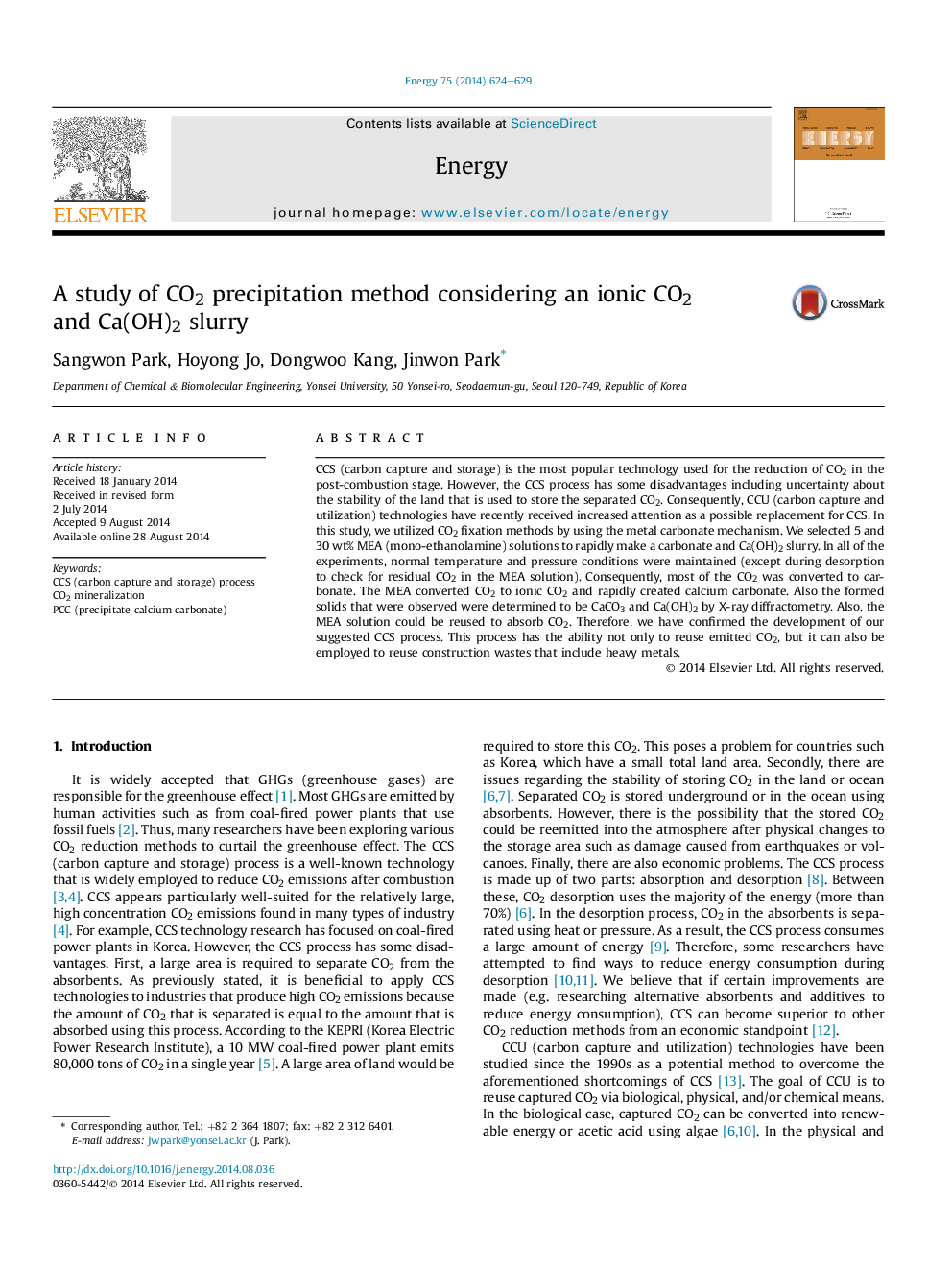| Article ID | Journal | Published Year | Pages | File Type |
|---|---|---|---|---|
| 8076893 | Energy | 2014 | 6 Pages |
Abstract
CCS (carbon capture and storage) is the most popular technology used for the reduction of CO2 in the post-combustion stage. However, the CCS process has some disadvantages including uncertainty about the stability of the land that is used to store the separated CO2. Consequently, CCU (carbon capture and utilization) technologies have recently received increased attention as a possible replacement for CCS. In this study, we utilized CO2 fixation methods by using the metal carbonate mechanism. We selected 5 and 30Â wt% MEA (mono-ethanolamine) solutions to rapidly make a carbonate and Ca(OH)2 slurry. In all of the experiments, normal temperature and pressure conditions were maintained (except during desorption to check for residual CO2 in the MEA solution). Consequently, most of the CO2 was converted to carbonate. The MEA converted CO2 to ionic CO2 and rapidly created calcium carbonate. Also the formed solids that were observed were determined to be CaCO3 and Ca(OH)2 by X-ray diffractometry. Also, the MEA solution could be reused to absorb CO2. Therefore, we have confirmed the development of our suggested CCS process. This process has the ability not only to reuse emitted CO2, but it can also be employed to reuse construction wastes that include heavy metals.
Keywords
Related Topics
Physical Sciences and Engineering
Energy
Energy (General)
Authors
Sangwon Park, Hoyong Jo, Dongwoo Kang, Jinwon Park,
